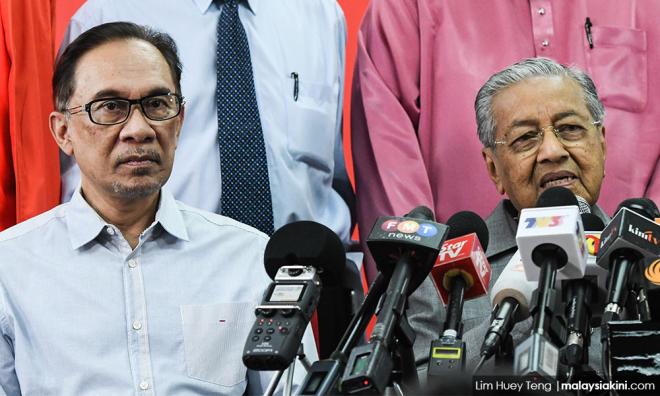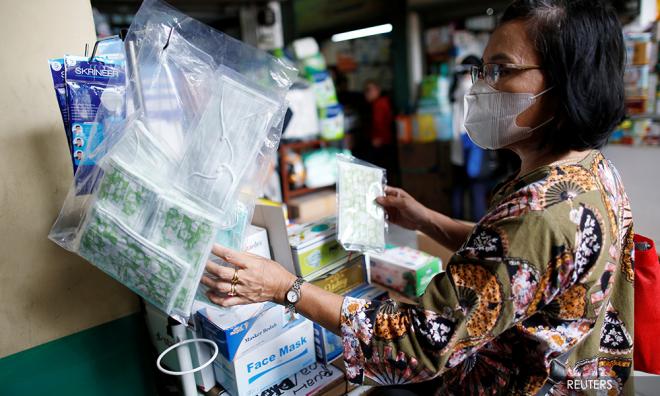
Published by Malay Mail, The Malaysian Insight & New Straits Times, image from Malay Mail.
Our government is to be commended for its robust and rigorous handling of the Covid-19 epidemic.
As it is, the metaphor of Malaysia’s economic links with China has now become a physical or literal reality: When China sneezes, Malaysia catches the virus.
That said, preventive measures put in place by our government, particularly the Ministry of Health (MOH) exemplifies our level of preparedness.
As mentioned in the media, we have been ranked the third best after South Korea and Thailand for pandemic, according to the Global Health Security Index 2019.
MOH has been closely monitoring the situation on the ground as well as in China.
Standard operating procedures (SOP) for the precautionary measures such as the strategic placement of thermal scanners or infrared energy sensor (complemented by thermographic monitors) at airports as well as major entry points and tourist locations (that are frequented by tourists from mainland China, Hong Kong) is very reassuring.
This is not to say that there is nothing much more we could do. Indeed, we should be exploiting the current situation to, in fact, further intensify our efforts.
And at the same time, we should also ensure that we are even better prepared for future pandemic — by the laying the groundwork now.
Now, thankfully the rate of recovery is quicker than SARS and MERS.
It has been said that Covid-19 may well be seasonal. China’s chief medical advisor was reported as saying that the pandemic is slowing and transmission could come to a halt by April.
But can we be so sure?
Covid-19 may not only persist for a while (i.e. lasting beyond May or June) but also spread wider (the multiplier factor).
The fact that Covid-19 is now known to be very adaptable and escape detection for up to 14 days or so (cases of asymptomatic patients).
Also, Covid-19 has been discovered by scientists to be able to mutate very quickly because it is a single stranded ribonucleic acid (RNA).
Covid-19 not only affects the respiratory (and also gastro-intestinal) tracts but also the cardiovascular system.
Its spike protein is able to bind to what is known as the angiotensin converting enzyme 2 (ACE2). By doing so, Covid-19 uses ACE2 aas host receptor to gain entry into the cardiovascular system.
ACE2 is a type of chemical catalyst essential for the metabolic functioning and homeostatic regulation of amino acids (basic building blocks of our protein) on the surface of endothelial (i.e. blood) cells (within the broader blood and lymphatic vessels).
In short, ACE2 affects the pumping of blood to our hearts, and by extension the risk of developing heart attacks.
By implication, this would expand and expend on our attention, effort and resources in monitoring and supervising patients alongside potentially raising the rate of mortality to a higher level.
At the same time, mutability of Covid-19 genome impacts on a vaccine’s capability to combat and destroy the virus, not to mention the cure (antiviral drug) itself.
Then there is also the possible mutation which would result in the number of “super spreaders” increase.
As the name suggests, “super-spreaders” are a group of infected people that have the propensity to extend the transmission net or scope beyond the average of 1.5 or 3.5 (transmission rate or RO).
Through the overall coordinating role of the National Disaster Management Agency (Nadma) — we could further bolster existing precautionary measures in terms of public health security such as the following:
Construct a pandemic-based hospital for the purpose of quarantine, observation and research (following the example of China) of communicable and contagious diseases:
A suitable site shall be chosen that is on the periphery of greater Kuala Lumpur — perhaps somewhere near Sungai Buloh hospital (which hosts the Infectious Disease Clinic) and along the North-South highway alignment (Plus).
A buffer zone shall be established both on the outer ring that separates the hospital proper from the other sites and the inner ring.
The inner ring would be immediately adjacent or extension of the hospital building proper or a terminal in its own right. Ideally it could take the form of a greenhouse.
Establishing a region- or Asean-wide main centre for pandemic/epidemic or contagion control. This is to exchange real-time data, findings/results and recommendations and conduct state-of-the art and cutting-edge R&D.
Funds could be pooled from member-states.
“Subsidiaries” or national centres under the management of the main centre could also be set up in the respective member states.
Develop multi-disciplinary-based AI for application to contagious disease (by also enlisting the technical assistance of experts from other countries, including not least from the Environmental Health Institute of the National Environmental Agency, Singapore).
The algorithm of the AI could be developed to:
- predict possible mutations (from a range of possibilities and probabilities, including based on the Bayesian theorem to account or allow for black or grey swan events);
- enhance surveillance methods including in the detection of asymptomatic patients on a more accurate basis;
- modelling (including statistical) for horizon scanning and scenario planning (including contingency) and resources mobilisation for the decision-making process;
- facilitate in the classification of patients into the respective triages; and
- identify source and cause of contagion (i.e. etiology) so as to develop the appropriate remedial action.
We already have our own home-grown Artificial Intelligence in Medical Epidemiology (AIME) — based in Penang — which tracks potential dengue outbreaks.
In addition to a pandemic-based hospital (the number of which could be increased in due time), certain hospitals in high-density urban areas should also be equipped with underground facilities for quarantine and rehabilitation purposes.
If need, there should a flood-proof tunnel that connects to epidemiological R&D centres for immediate action.
Develop a highly-mobile, rapid response, public health tactical unit equipped with specialised ambulances that contain diagnostics kit (such as computerised tomography/CT) and emergency tools to deal with the outbreak and initial wave of the contagion.
Integrating public health security into an overall total defence strategy and policy (emulating Singapore’s).
In summing up, we are there but not quite.
We still have a long way to towards ensuring that the game-changer (vaccine and cure and on-going R&D) is in town.
But there is no need to panic or become unsettled.
Wash, rinse, repeat.
Jason Loh Seong Wei is Head of Social, Law and Human Rights at EMIR Research, an independent think tank focused on strategic policy recommendations based on rigorous research.
Diterbitkan oleh EMIR Research.
Kerajaan Malaysia wajar dipuji kerana pengendalian wabak Covid-19 dengan mantap dan ketat.
Ini memandangkan metafora hubungan ekonomi Malaysia dengan China kini menjadi kenyataan fizikal atau harfiah: Apabila China bersin, Malaysia menangkap virus itu.
Langkah-langkah pencegahan yang dilaksanakan oleh kerajaan Malaysia, terutamanya Kementerian Kesihatan (KKM), membuktikan tahap kesediaan kita.
Seperti yang disebutkan dalam media, Malaysia menduduki tempat ketiga terbaik selepas Korea Selatan dan Thailand dalam persiapan menghadapi wabak menurut Indeks Keselamatan Kesihatan Global 2019.
KKM senantiasa memantau dengan teliti situasi persekitaran serta di China.
Prosedur operasi kepiawaian (SOP) untuk langkah berjaga-jaga seperti penempatan strategik pengimbas terma atau sensor tenaga inframerah (dilengkapi dengan monitor termometer) di lapangan terbang serta pintu masuk utama dan lokasi yang sering dikunjungi pelancong dari tanah besar China dan Hong Kong sangat meyakinkan.
Dan pada masa sama, kita juga harus memastikan bahawa Malaysia lebih bersedia untuk pandemik masa depan dengan meletakkan asasnya sekarang.
Terdapat juga kemungkinan mutasi yang akan mengakibatkan peningkatan jumlah penyebar hebat (super spreaders). Mereka ini adalah sekumpulan pesakit yang mempunyai kecenderungan untuk menjangkiti orang lain dengan kadar melebihi purata 1.5 atau 3.5.
Melalui peranan koordinasi keseluruhan Agensi Pengurusan Bencana Nasional (NADMA), langkah berjaga-jaga yang sedia ada dari segi keselamatan kesihatan awam dapat dipertingkatkan seperti berikut:
- Membina hospital berfokuskan pandemik untuk tujuan kuarantin, pemerhatian dan penyelidikan (mengikuti contoh China) penyakit berjangkit.
- Adalah disarankan bahawa pemilihan tapak bersesuaian di pinggir Kuala Lumpur – mungkin berhampiran Hospital Sungai Buloh di mana terdapat Klinik Penyakit Berjangkit dan berlokasi di sebelahan lebuh raya Utara-Selatan.
- Zon penampan (buffer) hendaklah dibentuk di kedua-dua lingkaran luar yang memisahkan hospital dari tapak lain dan lingkaran dalaman. Lingkaran dalaman akan terletak bersebelahan atau sebagai lanjutan bangunan hospital atau sebuah terminal.
- Menubuhkan sebuah pusat utama serantau/Asean untuk pemantauan pandemik/ wabak atau penularan. Ini adalah untuk pertukaran maklumat sebenar bertukar, penemuan/dapatan dan saranan serta menjalankan penyelidikan dan pembangunan (R&D) yang canggih. Dana boleh dikumpulkan dari negara anggota. Pusat nasional di bawah pengurusan pusat utama juga boleh ditubuhkan di negara anggota masing-masing.
- Membangunkan AI berasaskan pelbagai disiplin untuk diguna pakai dalam bidang penyakit berjangkit dengan mendapatkan bantuan teknikal pakar dari negara lain,(termasuk Institut Kesihatan Sekitaran, Agensi Sekitaran Negara, Singapura).
Prosedur pengiraan algoritma AI boleh dibangunkan, antaranya, untuk:
- meramalkan mutasi yang mungkin berlaku dari pelbagai kemungkinan dan kebarangkalian, termasuk berdasarkan teorem Bayesian untuk mengambil kira berlakunya peristiwa angsa hitam atau kelabu;
- meningkatkan kaedah pengawasan termasuk dalam mengesan pesakit asimptomatik dengan lebih tepat; dan
- mengenal pasti sumber dan sebab penularan untuk membangunkan tindakan pemulihan yang sesuai.
Malaysia sudah mempunyai AI dalam Epidemiologi Perubatan (AIME) yang berpangkalan di Pulau Pinang untuk menjejaki potensi wabak denggi.
Selain dari sebuah hospital pandemik, hospital-hospital tertentu di kawasan perbandaran juga dilengkapi dengan kemudahan bawah tanah untuk tujuan kuarantin dan pemulihan.
Sebagai rumusan, kita sudah berada di tahap yang memuaskan tetapi masih jauh lagi untuk memastikan ketibaan vaksin dan penawar.
Jason Loh Seong Wei merupakan Ketua Bahagian Sosial, Perundangan dan Hak Asasi di EMIR Research, sebuah badan pemikir bebas yang berfokuskan kepada pencernaan saranan-saranan dasar strategik berteraskan penyelidikan yang terperinci, konsisten dan menyeluruh.

